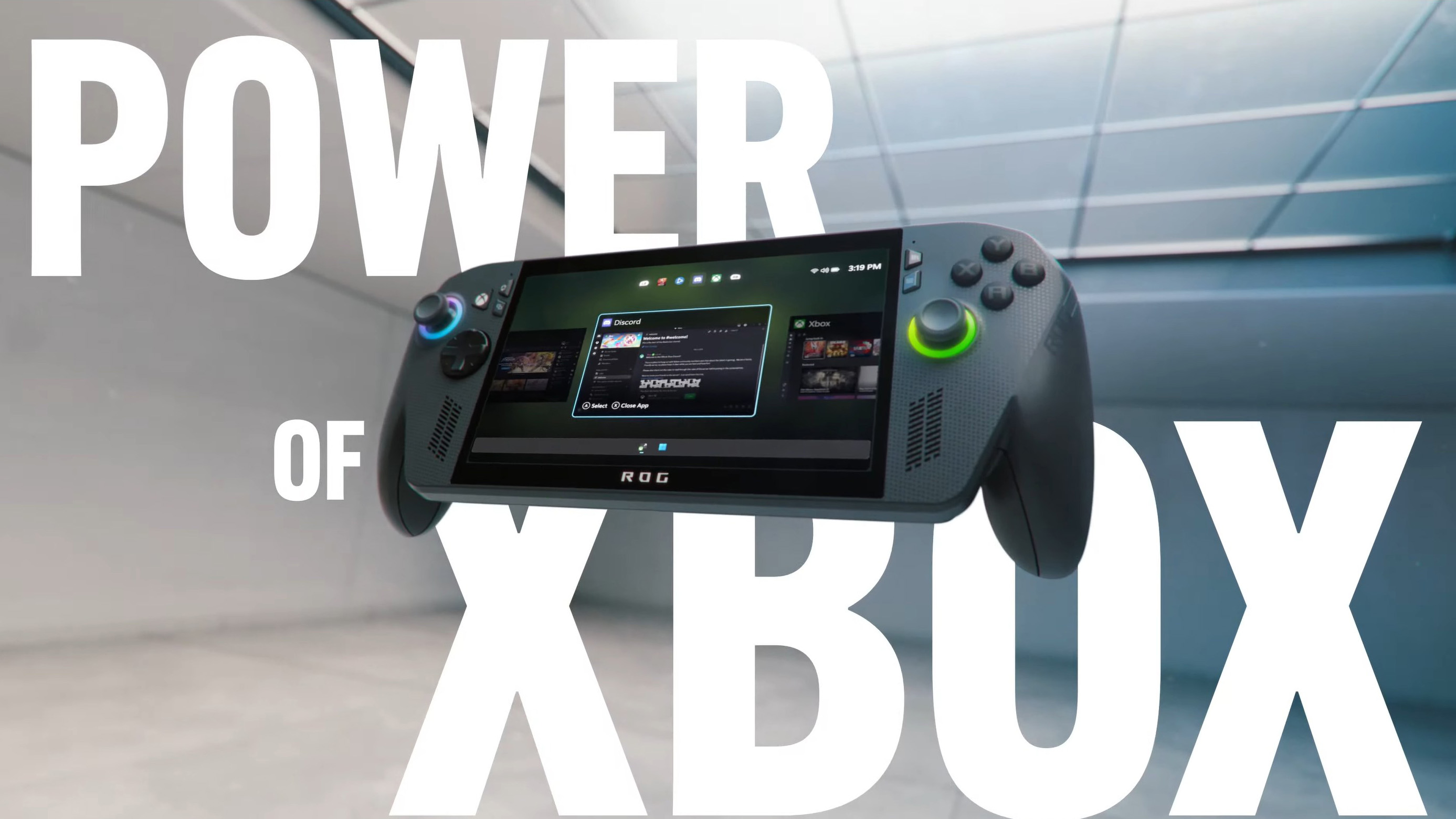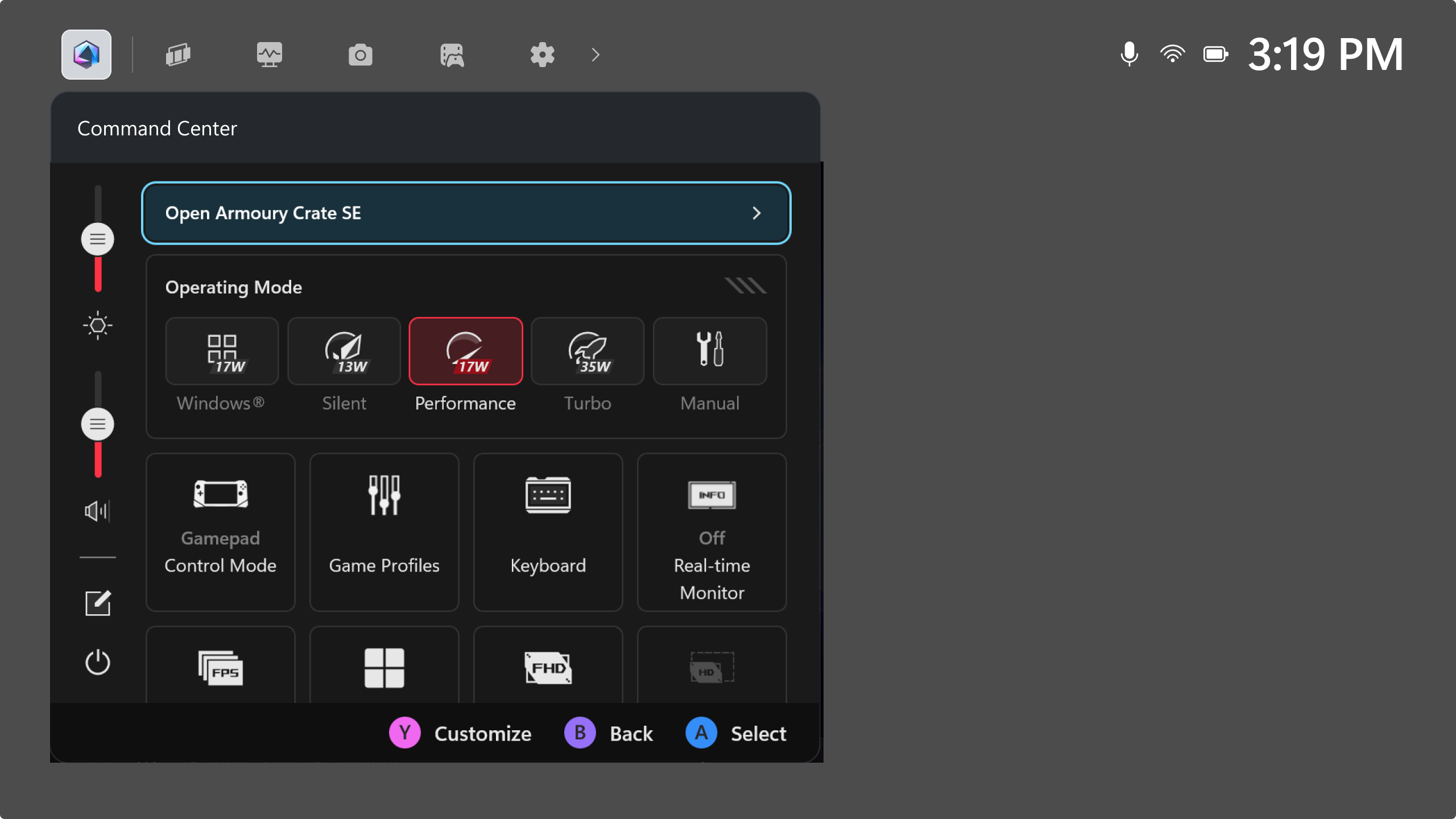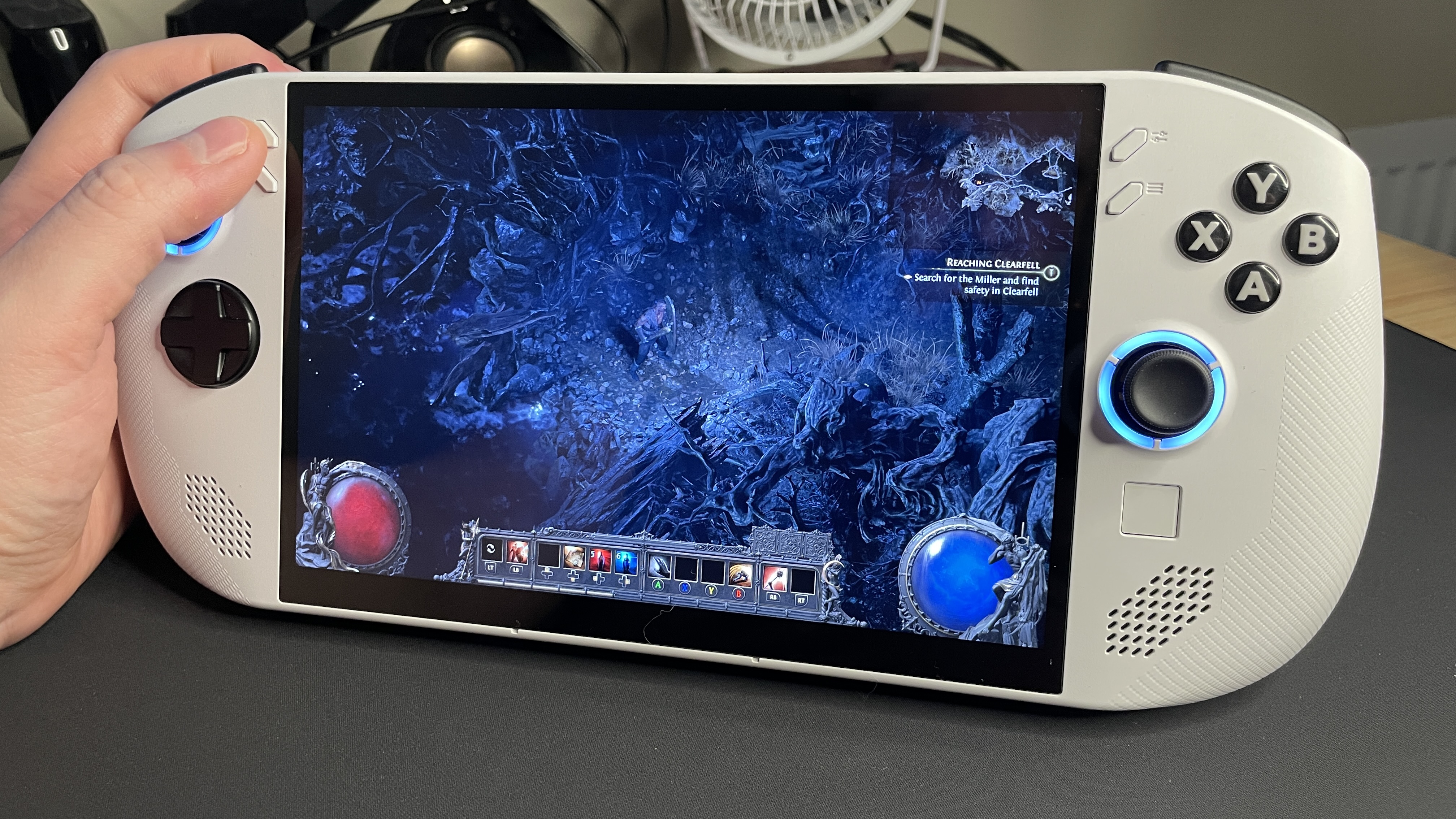
Xbox is becoming more like PC and Windows is becoming more like Xbox... is Microsoft looking to muscle SteamOS out of the way?
Xbox has just announced plans for two new handheld devices, launching by the end of the year. The ROG Xbox Ally and ROG Xbox Ally X look a lot like you’d expect an Xbox handheld to look like: Xbox controls, branding everywhere, and a new handheld Xbox UI. “This is an Xbox”, proclaims Microsoft’s Sarah Bond… so, why is it a PC?
If it looks enough like an Xbox, does that make it one? That’s the gist of the argument from Microsoft this time around, as its new handheld devices are actually running Windows 11. They’re made by Asus, makers of the excellent ROG Ally and Ally X, and it’s no coincidence that they all share a similar name. These Xbox devices are effectively redesigned versions of the popular ROG handhelds with different AMD processors under the hood: the Z2 Extreme, which is pretty much brand new, and the Z2 A, which is actually quite old.
The ROG Xbox Ally X looks great on paper: 16 GPU cores, 8 CPU cores, and the very latest architectures that AMD can muster. It packs a 1080p screen with a 120 Hz refresh rate and FreeSync Premium support. There’s 24 GB of memory, to match the ROG Ally X, and 1 TB of speedy M.2 storage in a 2280 form factor to match desktop drives. The best news of the lot is this device has an 80 Whr battery—that’s going to be key to keep this device running for longer away from an outlet. All the makings of a great handheld gaming PC.
The ROG Xbox Ally, less so. It has a weaker chip in the Z2 A, which is more or less a match for the Steam Deck’s APU. Issue is, Asus has paired it with a 1080p screen and 120 Hz refresh rate, which I doubt you’ll hit often in anything but the easiest games to run on low-end hardware. It has only 16 GB of RAM but makes up for it slightly with 512 GB of storage space. It also has a 60 Whr battery, which could see this little device tick over for a fairly long time, as that’s a larger battery than the Steam Deck OLED.
It might be decent for cloud gaming, at least, and that is one thing that Microsoft is keen to push on its new Xbox handheld. Oh, did you forget in between all those specs that we’re talking about an Xbox handheld here and not merely the new ROG Ally X?
So, what is Xbox about the Xbox Ally X and Xbox Ally?
The main draw for console players is the new UI, a full-screen experience built upon Game Bar and the Xbox PC app. This homescreen includes quick access to your game library, downloads, Game Pass, ways to jump around various PC launchers, and an in-game overlay. It also appears to integrate some parts of the Armoury Crate application, used to control the system performance on existing ROG Ally and ROG Ally X devices.
The underlying OS remains Windows, though Microsoft says it has trimmed some of the fat to make the OS more streamlined. We’ve tested the Lenovo Legion Go S with both Windows 11 and SteamOS and found the latter outperforms the former. Any chance of more performance and battery life, and less overhead, on Windows 11 can only be a good thing for these sorts of comparisons.
“We wanted to create an authentic Xbox experience in a handheld form factor,” Roanne Sones, CVP at Xbox, says. “With ROG, we made it happen on the Xbox Ally and Xbox Ally X.”
There’s also the design of the handheld. It’s shaped like an elongated controller, with a screen stuffed in the centre, which Asus says has been redesigned to “fit the hands like a real gamepad.” In some ways, it’s very similar to the ROG Ally X, though it does have a more pronounced rear-end. That’s sure to appeal to console gamers more so than the slightly flatter profile of most handheld gaming PCs today, though I’m keen to see if claims of “all-day comfort” bear true for the Xbox Ally X and Xbox Ally, which weigh 715 g and 670 g, respectively. Neither particularly heavy nor particularly light in comparison to most others on the market.
|
Specification |
ROG Xbox Ally X (2025) |
ROG Xbox Ally (2025) |
|---|---|---|
|
Operating System |
Windows 11 Home |
Windows 11 Home |
|
Comfort & Input |
ABXY buttons / D-pad / L & R impulse triggers / L & R bumpers / Xbox button / View button / Menu button / Command Center button / Library button / 2x assignable back buttons / 2x full-size analog sticks / HD haptics / 6-Axis IMU |
ABXY buttons / D-pad / L & R Hall Effect analog triggers / L & R bumpers / Xbox button / View button / Menu button / Command Center button / Library button / 2x assignable back buttons / 2x full-size analog sticks / HD haptics / 6-Axis IMU |
|
Processor |
AMD Ryzen™ AI Z2 Extreme Processor |
AMD Ryzen™ Z2 A Processor |
|
Display |
7″ FHD (1080p) IPS, 500 nits, 16:9 |
7″ FHD (1080p) IPS, 500 nits, 16:9 |
|
Memory |
24GB LPDDR5X-8000 |
16GB LPDDR5X-6400 |
|
Storage |
1TB M.2 2280 SSD for easier upgrade |
512GB M.2 2280 SSD for easier upgrade |
|
Network and Communication |
Wi-Fi 6E (2 x 2) + Bluetooth® 5.4 |
Wi-Fi 6E (2 x 2) + Bluetooth® 5.4 |
|
I/O Ports |
1x USB4® with DisplayPort™ 1.4 / Power Delivery 3.0, Thunderbolt™ 4 compatible |
2x USB 3.2 Gen 2 Type-C® with DisplayPort™ 1.4 / Power Delivery 3.0 |
|
Battery |
80Wh |
60Wh |
|
Dimensions |
290.8 (W) x 121.5 (D) x 50.7 (H) mm |
290.8 (W) x 121.5 (D) x 50.7 (H) mm |
|
Weight |
715 grams |
670 grams |
|
Included |
ROG Xbox Ally X |
ROG Xbox Ally |
But the key takeaway from this is that there isn’t actually very much Xbox about the Xbox Ally X and Xbox Ally. These are Windows 11 PCs, running PC games. There’s no real allusion to anything otherwise, bar a few quotes from Microsoft stating “This is an Xbox”.
And that’s the way it all appears to be trending for Microsoft and Xbox. The Xbox ecosystem spread across console, PC, and cloud.
Below: Note the way Microsoft is listing platforms for upcoming games in this year’s Xbox Games Showcase.
If you paid close attention during Microsoft’s stream, you’ll have noticed it also made another change suggestive of a broad change for the platform and where it’s headed. No longer was Microsoft just happy to label games as coming to Games Pass, its own consoles, and PC. No, this year it announced upcoming games for Xbox Series X|S, Xbox PC, and Xbox Cloud.
Microsoft then added any competitors below its own platforms, which in this case includes both PS5 and Steam.
That’s definitely a change of tone, as Microsoft last year just took ‘PC’ as its own platform, as per the screenshot below, given the ubiquity of Windows as an operating system. This time, Microsoft made sure to note Xbox PC and Steam as two distinct entities. I’d be willing to chalk this change up to increasing competition between Microsoft and Valve.
Below: Note the way Microsoft listed platforms for upcoming games in last year’s Xbox Games Showcase.
Most PC gamers play games on Steam and most Steam users run Windows. That’s long been the case, despite Gabe’s best efforts to get everyone to switch over to using Linux for over a decade or more. However, in recent years, and even more so in recent weeks, Valve has had a breakthrough: the Steam Deck, running SteamOS.
Powered by Linux and harnessing a compatibility layer called Proton, the Steam Deck became an instant success. Linux finally has its gaming champion, an affordable handheld gaming PC powered along by a semi-custom AMD chip that made it all possible. That same chip, more or less, being used in the ROG Xbox Ally. The Steam Deck isn’t major competition for Microsoft, a company that until today hadn’t a handheld gaming console to its name, but it did kick off a revolution of handheld gaming PCs.
These other handheld gaming PCs, the Asus ROG Ally and Ally X chiefly among them today, are powered by Windows. But that could all change. The release of SteamOS on a version of the Lenovo Legion Go S, previously a Windows-only handheld, proves that Microsoft has stiff competition for handheld OS dominance. In our testing, SteamOS ran better on Lenovo’s little handheld than Microsoft’s OS. You can stick SteamOS on all sorts of devices, from the Asus ROG Ally X and ROG Ally to a Framework laptop. SteamOS is not as widely supported as Windows and does require some tinkering on some devices, but providing you have an AMD APU, it might just work.
That means SteamOS, unlike any other time in the past, has the potential to boot Microsoft off a range of devices. SteamOS only needs to be seen to be the more performant, battery-saving, and optimal OS for handheld gaming PCs for the market to swing dramatically in that direction. And that’s a problem for Microsoft. Xbox might have to duke it out versus PlayStation and Nintendo, but Windows has largely been irreplaceable for PC gaming.
Valve has grand plans for expanding support for SteamOS, to include new chipsets outside of AMD’s latest, controllers, and even various platforms outside of Steam. All of its work is open source, so it’s building on the work of others and, in turn, helping others build it up. So if it does gain enough traction in the market, development hours might snowball.
Yet Valve has said it has no qualms with Windows as an operating system if it serves a good experience to users.
“I don’t think the goal is to have a certain market share, or to push users away from Windows,” Pierre-Loup Griffais, SteamOS developer and Steam Deck designer at Valve, told Frandroid at the beginning of 2025. “If a user has a good experience on Windows, there’s no problem. I think it’s interesting to develop a system that has different goals and priorities, and if it becomes a good alternative for a typical desktop user, that’s great. It gives them choice. But it’s not a goal in itself to convert users who already have a good experience.”
So, maybe Valve doesn’t see Microsoft as I presume Microsoft sees Valve, or anyone else seen to be vying for its PC platform bragging rights. And, hey, Microsoft might not be signalling its inner intentions to me with the Xbox branding and handhelds and instead merely wants to build up the handheld market the only way it can: through a genuinely good Windows handheld experience. That is, after all, a pretty good plan.
Currently the best way to launch games on a Windows-powered handheld is through Steam’s Big Picture Mode, which is, essentially, the same as the SteamOS launcher. Microsoft plans to launch its new UI on other Windows-based handhelds in the future, starting with the ROG Ally X and ROG Ally, but that won’t begin until at least next year, which gives Valve some breathing room.
Though you can see where both companies are headed here. On their current trajectory, it’s tough to see how they don’t butt heads in some form or another. This might just be about the handheld gaming PC market today, and maybe that’s all it ever will be, but someday in the future (likely the far-flung future) it might be about Linux vs Windows for much, much more of the market. Microsoft is not going to let that happen without a fight, starting with the one unfolding right before our eyes.















